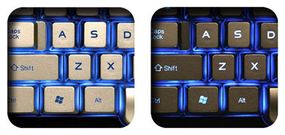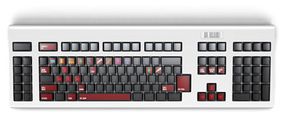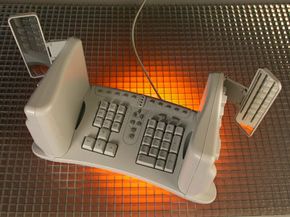Non-Traditional Keyboards
A lot of modifications to the traditional keyboard design are an attempt to make them safer or easier to use. For example, some people have associated increased keyboard use with repetitive stress injuries like carpal tunnel syndrome, although scientific studies have produced conflicting results. Ergonomic keyboard designs are intended to keep a person's hands in a more natural position while typing in an attempt to prevent injuries. While these keyboards can certainly keep people from holding their hands in a "praying mantis" position, studies disagree on whether they actually prevent injury.
The simplest ergonomic keyboards look like traditional keyboards that have been divided down the middle, keeping a person's hands farther apart and aligning the wrists with the forearms. More complex designs place the two halves of the keyboard at varying angles to one another and to the surface on which the keyboard rests. Some go even further, placing the two halves of the keyboard on the armrests of chairs or making them completely perpendicular to the desk surface. Others, like the Datahand, don't look much like keyboards at all.
Advertisement

Some modifications, while not necessarily ergonomic, are designed to make keyboards more portable, more versatile or just cooler:
- Das Keyboard is a completely black keyboard with weighted keys that require more pressure from a person's strongest fingers and less pressure from the weaker ones.
- The Virtual Laser Keyboard projects a representation of a keyboard onto a flat surface. When used successfully, a person's fingers pass through the beam of infrared light above the projected surface, and a sensor interprets it as a keystroke.
- The True-touch Roll-up keyboard is flexible and can be rolled up to fit in a backpack or bag. Blue backlit keyboard 'on' Blue backlit keyboard 'off'
- Illuminated keyboards, like the Ion Illuminated Keyboard, use light-emitting diodes or electroluminescent film to send light through the keys or the spaces between keys. Photo courtesy www.artlebedev.com Optimus keyboard programmable hot keys
- The Optimus keyboard has organic light-emitting diodes (OLEDs) in the keys. Users can change what letter, command or action each key represents, and the OLED can change to display the new information.

With the exception of the Virtual Laser Keyboard, which has its own sensing system, each of these keyboards uses the same type of technology as traditional models do to communicate with the computer. We'll look at that technology next.
